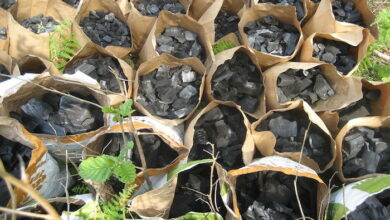
Soil Contamination: Its Causes, Effects, and Solutions
What is Soil Contamination?
Soil contamination refers to the destruction of land that could be used constructively by human activities, either directly or indirectly. Presently, 300,000 ha of UK land is thought to be contaminated by toxic elements such as lead and arsenic. The same goes for the other industrialized nations which are the worst hit. The developing countries are also steadily but surely moving toward this direction.This should be cause for great concern considering the devastating effects soil pollution brings to the environment.
Causes of Soil Contamination
Soil pollution is mostly caused by mindless human activities such as:
Industrial waste
Industries are by far the worst polluters of the soil with all the chemicals they release into the environment be it in liquid or solid form.
Deforestation
Clearing of trees leaves soil exposed to the elements so they are easily carried away by soil erosion. This leaves land barren and incapable of supporting vegetation.
Excessive use of fertilisers and pesticides
The increased demand for food has forced farmers to use fertilisers and pesticides that release nothing but toxins into the soil, killing useful microorganisms that are important in plant growth.
Garbage pollution
Garbage that cannot be recycled is disposed of carelessly and this is not only an eyesore but pollutes the land. Some of this waste can literally take thousands of years to decompose!
Effects of Soil Contamination
Climate change
Deforestation causes a change in the rain cycle and this is a contributing factor to global warming and loss of ecosystems.
Loss of soil fertility
With the rapid growth of human population, we need all the food we can get. Chemicals used on soils reduce soil fertility so food production drops.
Impact on human health
Countless deaths have been caused by human beings ingesting foods that are grown in toxic soils.
How to Reduce Soil Contamination
Reforestation
Most countries have policies that require its citizens to plant more trees where one has been cut. This is an effective measure to curb soil erosion. Governments should also take punitive action against those who cut down trees without a care in the world.
Controlled farming practices
Too much of anything is dangerous. The same concept applies to farming practices in that they should be carried out in moderation. Practices such as overcropping and overgrazing should be avoided since they increase soil erosion.
Bioremediation
This is the introduction of microorganisms into the soil that break down contaminants. This is a perfectly environmental friendly approach since it allows nature to take its course thus restoring balance.
Reduce, Recycle, and Reuse
Items that can be used again should not be disposed of; things made of paper, glass, aluminum and the like should be recycled; lastly, where excesses such as the use of polythene paper can be avoided, then, by all means, reduce their use.
Use biodegradable products
Where possible, opt to use biodegradable products such as cartons for packaging; if they were to be disposed of, they would easily be broken down to become part of the soil.
Reduce the use of pesticides and fertilisers
Pesticides and fertilisers are major contributors to soil contamination so cutting down on their usage could do a world of good to the soil.
We have one earth and if we completely destroy its surface, we will be the first to starve or poison ourselves. Redeeming land to its original state is nearly an impossible task. It’ll require altering its properties which can be avoided if only we put our land into its proper and responsible use.













How would you tackle contamination caused by war? I am referring to the contamination caused by WWI and WWII ammunition.
To this day, the unexploded (live) ordnance still pollutes and even kills 100 years later. Some of it is white phosphorus, but you also have lead, mercury, and a host of other contaminants.
From the photos of areas like Ypres, Somme or Verdun, the farmers now growing food in the areas around where the worst of trench warfare occurred continue with intensive till farming. Some areas of Belgium and France have been so thoroughly destroyed, nothing grows there to this day, and there is this thing called Zone Rouge, where all human activity is forbidden. These are no go zones.
In the areas where farming is allowed, I see a land decimated by both war and conventional agriculture. It’s pure clay, heavily tilled, and when it rains, the water does not permeate the soil. As the water runoff further depletes the soil, more ammunition (both spent and live) is uncovered, along with human remains. The farmers are tilling a live mine field…
So, how would you help solve this problem and make a rather large area in the heart of Europe a viable place to grow food and live in once again? Can Permaculture help achieve that goal? If yes, how can the local farmers be convinced about changing farming practices?
Thank you for your attention,
I love this article:)
I was surfing on internet for this topic for my college project work and read a lot of information but this one is the awesome.
I gradually get interested on this topic and thiking about to make carrer in this field.
I like this article.
I have liked this article so much. We are the root causers of this mess. So we must be the ones to mitigate it before it gets out of hand.
This article has been useful in my study assignment.
Thank you so much.